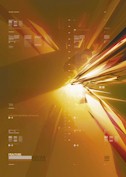
The Internet offers the potential of interweaving various communications media to produce new forms that are compellingly different from anything we have seen to date.
At present, despite a lot of inflated talk about multimedia, mostly what we see are combinations of text and images or videos that tempt us to check something out. These tend to be most common on table-of-contents-type pages, although they can also be placed in the margins of an article, or interjected into the article's body. But even when embedded in a piece of related content, their net effect is usually to draw our attention elsewhere, rather than being an integral part of the exposition of the main point.
If material is presented in the kind of modular exposition format described and demonstrated throughout this essay, why couldn’t a single main work encompass a section of text, then a section of short video, and so forth?
Then again, why would the two media have to be restricted to separate sections? Why couldn’t they occur together right in the same modular chunk of material? There might be text on one side of the screen and some form of short video material looping on the other side—again, not inducements to check out potentially related pieces of content, but parts of the main idea itself. This combination of text and video could be far more rich, clear, and compelling than either medium on its own. Then when the user clicks the “continue” button for the text, another video item appropriate to the new text could also appear.
For that matter, why would text and video have to appear in separate sections of the screen? Sometimes it might be more effective to have the text overlaying and perhaps crawling over the video; sometimes the video might “grow” from a section of text. The possibilities are limitless.
They expand still further when we consider the options of interweaving in still photographs, artwork, music, spoken words, and other types of audio—in fact, virtually any other form of content that can be digitized.


